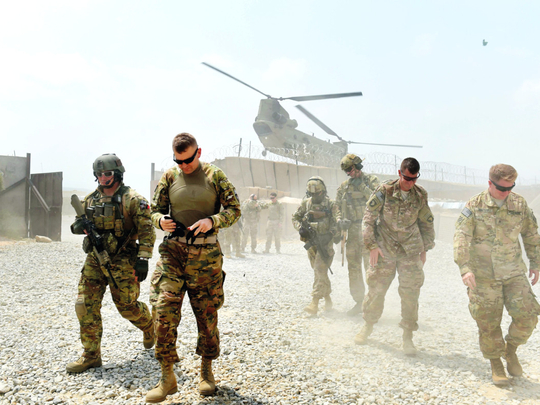
For the past two decades, troops belonging to nations in the North Atlantic Treaty Organisation have been inextricably tied to the events on the ground in both Iraq and Afghanistan, a relationship that now is at a turning point given there is a new leadership in Washington and an annual review of the missions underway as defence ministers from the alliance huddle virtually with Jens Stoltenberg, Nato’s secretary general.
In Afghanistan, where a tentative peace deal with the Taliban means that foreign troops are supposed to eventually stand down and withdraw, the conundrum facing Nato and indeed the government in Kabul itself, is whether the conditions are right for such a troop drawdown to occur.
Speaking on Wednesday, Stoltenberg said that alliance troops would only withdraw if and when security conditions allow. Certainly, the Taliban have been able to prove time and time again that they retain the ability to strike at times and places of their choosing, and that the internationally trained and supported Afghan security forces are as yet unable to hold the line to allow peace and prosperity to fully take root.
Intelligence reports suggest that conditions for Nato to withdraw or indeed for the government of Afghanistan to speak with confidence of a peaceful future — where the rights are all are respected — may yet be unsure.
The alliance has almost 10,000 troops on the ground in the war-torn nation and face difficulties in maintaining their duties training Afghan security forces if US logistic and transport services are withdrawn.
A full decision on the Nato mission will likely be made mid-March at the next defence ministers’ powwow but some nations have indicated they would be willing to remain.
In Iraq, where some 500 Nato troops currently help train and assist Iraqi security services now the defence minister are looking at bumping that figure to levels near the 5,000 mark, with the increased numbers taking on an enhance roll in the security intelligence sector.
The reality is that given the potential for volatility in both hotspots, a Nato presence is likely to remain in key secondary roles, with forces from both nations having the actual boots on the ground.
Gone are the days when Nato boots should be on the ground and kicking in doors. What’s key, however, is that the alliance must respect the national government and sovereignty in both countries. That is paramount.








